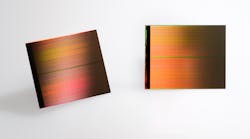Micron Technology announced that it would buy out Intel’s share in IM Flash Technologies, taking full control of the joint venture that resulted in the development of 3D X Point technology. The company expects to pay around $1.5 billion for Intel’s remaining stake and to assume the venture’s outstanding debt, which was $1 billion as of August 30.
IM Flash Technologies will become Micron’s wholly-owned subsidiary following the deal, which is projected to become official on January 1 and close before the end of next year. Micron currently owns 51 percent of the business, which was founded to develop new generations of flash memory, including 3D NAND. The X Point technology is manufactured at the production facility it shares with Intel in Lehi, Utah.
Micron has been distancing itself from Intel over the last year, a little more than a decade since each company invested around $1.2 billion to establish the venture in 2006. In January, the companies said they would discontinue the codevelopment of NAND flash. In July, the companies announced that they would stop collaborating on 3D XPoint. Under the terms of buyout, Micron will take over the 1,700 people employed by the IM Flash venture.
After putting the finishing touches on the second generation of 3D XPoint memory in the first half of next year, the companies plan to part ways on future development projects. They have agreed to independently fund new versions of the solid state memory. On Thursday, Micron also stated that it would supply Intel with 3D XPoint wafers for a year after the transaction closes.
“Micron's acquisition of IM Flash demonstrates our strong belief that 3D XPoint technology and other emerging memories will provide a unique differentiator for the company and be an essential solution for new data-hungry applications," said Sanjay Mehrotra, Boise, Idaho-based company’s chief executive officer, in a statement.
Chips based on 3D XPoint technology are produced with thin columns of memory cells stacked tightly in a three-dimensional crosshatch pattern, which allows the cells to be accessed individually, boosting latency and endurance over NAND. The technology is also nonvolatile, meaning that it can save data even after being powered down. That contrasts with DRAM, which is erased without a constant power supply but benefits from being faster than 3D XPoint.
Micron only plans to release chips based on 3D XPoint technology next year, while Intel has been sampling its new Optane persistent memory product line over the last year targeting personal computers and corporate servers. Micron has previously stated that it will introduce its first 3D XPoint products before the end of next year, ramping up production—and revenue—in 2020.
Intel is building memory controllers into its latest Cascade Lake and Cooper Lake server processors to support Optane, which could challenge DRAM as main memory in data center. Optane uses the same memory bus to connect to the processor as traditional DRAM, which is more costly and holds less information than 3D X Point. DRAM does, however, continue to have higher performance.
The Santa Clara, California-based Intel is winning over customers that include Google and Baidu, both of which store and process massive amounts of information in its data centers. These companies have been experimenting with samples of the new memory in data centers in recent months. Intel has also been boosting its 3D NAND capacity with an eye toward replacing hard drives in a wide range of applications.
Micron does not anticipate a significant impact to its 2019 financial results or capital expenditures as a result of the buyout. Micron reported property, manufacturing, and equipment assets in the third quarter of $22.7 billion, up from $19.4 billion over the last year. The company's long-term strategy is to invest 30 percent of revenue—which jumped 40 percent over the last year to $7.80 billion in the third quarter—on capital expenses.
